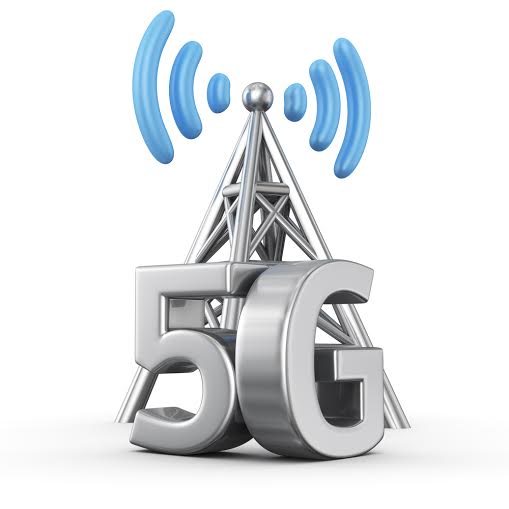
If you thought that broadband and the cloud are the end-all of phone data and Internet technology, you’ll be pleasantly surprised by the breakthroughs hovering on the horizon. These are some of the exciting new developments in store, and how they will impact our lifestyles and industries.
Technology changing the Internet and phones
(i) Lasers
It’s now possible to download a movie in a matter of seconds, but the Internet could be sped up even more with laser technology. Fibre optic cables already transmit data through waves of light, but laser technology is being refined. At Boston University, researchers have managed to log 1.5 terabit per second, which is much fast than the speeds currently being offered by Google Fibre.
CalTech researchers have invented a new type of laser that provides an extremely high degree of spectral purity, which means faster data transmission speeds. Stanford researchers, on the other hand, are developing lasers that improve upon the current two-dimensional laser technology.
With the introduction of a third dimension, Internet speeds could be significantly sped up, which could translate to even better phone and video call quality, as well as open the way to real-time telework collaboration and other work practices.
(ii) Microchips
While ever-faster data transfer speeds can have a major impact on work and life, organisations and individuals will find it difficult to take advantage of these speed breakthroughs without access to similarly powered-up devices that can handle the faster data loads. The answer lies in specifically-designed microchips that will be able to process tremendous amounts of data.
IBM recently showcased a tiny microchip that works as an analogue-to-digital converter, and facilitates high-speed digital equalisation across distance fibre channels. This means the chip, which is smaller than a fingernail, can support connections as fast as 400 gigabits per second; Google Fibre currently provides 1 gigabit per second. Often the challenge with these types of technology breakthroughs is bringing down the costs of adoption for businesses and individuals.
(iii) Protocols
Protocols are the rules that define how data is exchanged on the Internet. Refining and improving protocols can lead to much faster Internet speeds without expensive research and the costly investment of technology or hardware.
The Flexigrid protocol, for example, defines a system where multiple signals can travel over each other through a single cable. Currently, connections travel by themselves, one at a time. These improved protocols can be applied to copper phone lines as well as the latest fibre optic cables, so they can boost speeds in countries that don’t yet have the latest infrastructure.
(iv) Eliminating servers
Servers appear to be the mainstay of the Internet, but there are many research groups that are looking for way to replace servers. An EU project, PURSUIT, is examining ways to distribute data loads across computers on individual networks, much like peer-to-peer sharing.
The reasoning is that instead of relying on static servers to store data and send data to multiple networks, data would be stored in many different locations, which would lead to faster transfer speeds and improved reliability. For phone data and Internet technology, this could mean no down times and fewer disruptions to access.
What the future will look like
How will better lasers, microchips, and protocols, and the elimination of servers impact work and life? Commentators have suggested that the Internet of Things, big data, and hardware and software are some of the trends to watch.
Mobile standards
Mobile technologies are under constant revolution, and 5G is the next generation standard for data speeds. While no standards have been set as yet, there are indications of what 5G might look like from industry gamechangers, such as South Korea, and the companies Samsung and Ericsson.
Tests being conducted by Ericsson, for example, suggest that 5G could offer speeds that 250 times that of the current 4G networks. Ericsson has said that it has achieved a wireless speed of 5 gigabits per second. South Korea is setting a goal of delivering speeds up to 1,000 times faster than current 4G standards, with the government investing US$1.5 billion for research and development.

5G technology is probably unlikely to be deployed before 2020. Even then, uptake is likely to be moderate, as many countries are still integrating 4G standards into their infrastructure and the delivery of 5G would require an upgrade.
The Internet of Things
The Internet of Things (IoT) is expected to be reality sooner rather than later. According to Cisco’s CEO, John Chambers, IoT is about changing processes and delivering the right data to the right person at the right time, so they can make the right choices.
Chambers says that the concept sounds deceptively simple, because in today’s data-rich world it takes effective tools to work out what data should be collected. Many organisations – public or private – don’t know how to manage big data. They are good at collecting it, but not processing and analysing it.
Chambers suggests that basic things such as saving money on street lighting can be realised through IoT solutions. But health care, education, garbage collection, and city management can all be improved through IoT application. Commercial industries that would benefit from this type of sophisticated analytics include manufacturing, retail, mining, and energy.
Wearable technology entrepreneurs such as Tan Le, who founded Emotiv Lifesciences, agree. Le says that the data is the business model, and her company has invented a product that converts brain waves into data that people can use to manage their moods and health.
The end of data compression
While consumers are accustomed to the highly-compressed video content they stream over the Internet, as massive data speeds become widely available the need for data compression may be eliminated.
This could impact every industry that conducts video activities over the Internet, including health, education and commerce. Teleworking opportunities might become commonplace; the sharing of information and large amounts of data could become seamless and fully integrated into daily processes.

How Australia is faring
Innovative information technology boosts business competitiveness, agility, and export potential. While Australians, especially those living in capital cities, have access to phone data and technology tools, Australia lacks a technology innovation centre such as Silicon Valley. A technology innovation hub could strengthen the economy while simultaneously bringing new innovations to the local market more quickly.
As noted above, the South Korean government is already actively pursuing the next generation in mobile technology, which they expect to be in service by 2017. 5G technology – at 1,000 times faster than 4G – will allow users to download an 800 megabyte movie in a single second.
At least 87% of the Australian population has access to 4G technology, and Telstra has suggested that its 4G network will be available to 90% of the population by 2015. While developing faster mobile technology is important, mobile may never fully replace optical fibre. Australia’s NBN rollout is expected to be complete by 2021, and this will deliver ultra-fast Internet as well as facilitate better phone and data connection for millions of households.
Other than building vital infrastructure for households and businesses, the Australian government could encourage tech innovation in a variety of ways. For example, by rewarding universities for the patents they secure, and helping start-ups secure funding. Better access to technology education could also support entrepreneurial innovation by upskilling the labour pool.



















